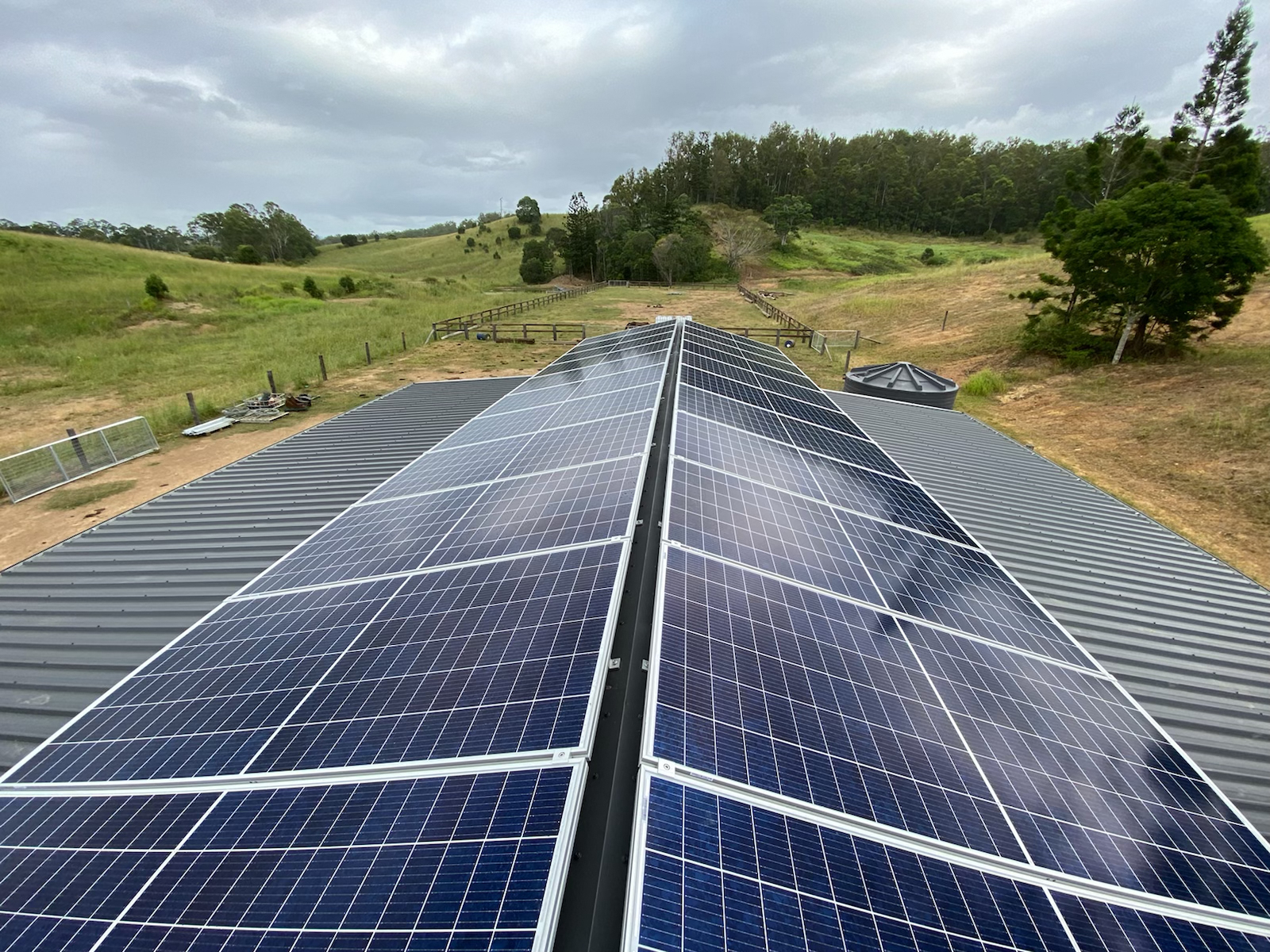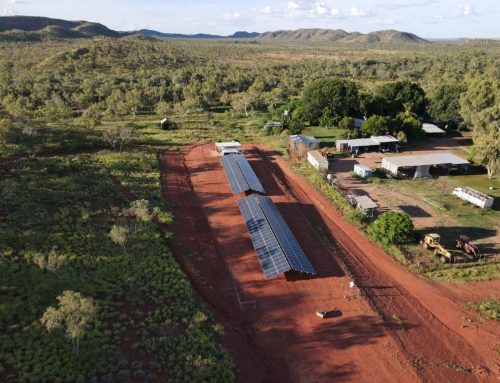ABC North West Qld,
08 Jul 2021 08:32,
R00088315979
When was the last time you had a power outage at your place? They seem to be happening all the time. In Mt Isa lately, there have been lots of planned power outages. Maintenance, apparently, still annoying, though really makes you realise how much you rely on power. What about planned or sorry about unplanned outages? The opposite, Something’s broken. How long is it does it take, usually, for it to get fixed in the power get turned back on? The state government has announced a massive trial project designed to secure future power supplies for regional producers, specifically so people living and working on property. They’re called SAPS, Standalone power Systems, so a combination of solar batteries and backup diesel generators installed on two cattle stations near Mount Isa. Mick de Brenni is the minister for Energy and Renewables and Hydrogen. Minister, so how exactly is this programme going to work?
Electricity industry, particularly for Northwest Queensland, it’s incredibly important that particularly our rural producers can rely on cheaper, cleaner, reliable electricity to perform their business. of course, they support the employment of tens of thousands of Queenslanders. And so what we’re doing is we’ve set up first of the first two of 147 standalone power system trial. So what these are is a combination of a solar installation, around about 86 kilowatts per site, backed up with batteries and diesel generators, if needed, to make sure that we’re able to deliver cheaper, cleaner, more reliable electricity to those users that are at the end of our electricity networks. So many of our cattle stations, for instance, in and around the Northwest, are at the end of long, stringy bits of electricity line that sometimes are impacted by storms or other outages, meaning that their power is sometimes expensive and it’s sometimes unreliable. And so these trials will look at how we fix that, so we make sure that we keep those producers doing their thing, and make sure that they continue to support the workforce that delivers that great outcomes of Queensland.
How were these two initial sites chosen?
Ergon is working across the region to look at producers that, as I say, at the end of what we call single wire earth return electricity system. So imagine a remote cattle station that has one line running all the way out to it. And so we’re looking for those locations that have been impacted in the past by outages, that have been impacted by higher electricity prices. And so we’ll target those for this two-year trial, and if we’re able to identify that this system works, will roll it out across the state in combination with a whole range of other investments to ensure that Queenslanders continue to see a declining trend in their power prices. That’s good for households, it’s good for business and it’s good for our economic recovery.
This programme sounds very similar to an initiative that was done by the McKinley Shire Council in 2019. They set up what they termed a Power Pod in Kynuna, which, I don’t know the specifics, but sounds very similar the solar generation with batteries and backup Diesel. And they said in their own trial that they were concerned about the viability of the project, given the cost of the diesel once the batteries have to kick in. And I think they wholly decided that might not be suitable. Are you aware of that programme like in those are the types of things you’ll be looking into?
Well, I’m sure that our engineers with Ergon are taking a look at all of the other initiatives that have been deployed, both here in Queensland, across the country and internationally as well. But it’s important that we continue to adopt new technologies. And every day, the technology with batteries and our solar panels are improving. Over the last few years, the generation rates from solar systems have been increasing exponentially. And so every day and every trial like this tends to deliver greater returns from those initiatives and so we’ll continue to assess those as we go forward. But the key here is that these cattle stations and large employers, important employees, and a critically important to the prosperity of Queensland overall. In fact, the agricultural sector contributes about 19 billion dollars to Queensland’s economy, as I said, supporting thousands of jobs. And so we need to ensure that when they flick the switch, that they’ve got the electricity they need to do their job and keep people and work. And so our job as government, and of course, with our publicly owned distribution network through Ergon, is to make sure that we’re using the best technology so that they can do their work.
Minister de Brenni, we’re talking about this Standalone power trial that’s looking to essentially secure power supplies to remote cattle stations, to Northwest cattle stations. Have been selected as part of this initial trial. You said it’s going to be over two years. At the beginning, you said its part of a hundred and forty-seven different trial locations. Are those also happening over the next two years?
Well Ergon will take some early readings from the Standalone power Systems in the Mt Isa region, and then we’ll determine where our locations should be chosen to continue the roll out of this trial. If it performs well, then we’ll continue to roll them out. So another hundred and forty-five to go. But it will really depend on the success of these initial locations. of course, this is all about making sure that our producers remain internationally competitive as well. So we know that in Queensland our rural producers are challenged by, of course, the vastness of our state. Getting their product to market can be expensive. And so everything that we can do to support them to do that most efficiently, we will do. So I think Ergon will continue to look for those very remote sites across Queensland, where electricity is sometimes difficult to deliver, expensive to deliver, and can be impacted by things like storm cyclones, floods and fires, Etc. So they’ll work on all of those attributes that looking at the remaining sites, dependent on the efficiency of these two trials.
Fingers crossed the trial all goes well and is successful. Two years down the track, if the state government is happy with this outcome and thinks that this is the solution, the next step needed to secure power for remote property owners, is the state government prepared to pay the bills of putting these pods there? Because that can’t be cheap
Well, of course. There’s a requirement to invest in our businesses right across Queensland. As I mentioned, they’re incredibly important to Queensland’s economic prosperity. And so supporting them with that electricity, I think, is a worthwhile investment for Queenslanders. Someone is already paying for this electricity right now, and we think that through these trials, we can actually deliver a cheaper outcome for those electricity consumers. And of course, one of the key things here is about diversifying our electricity network in Queensland. So we’ll be looking to increase the amount of renewables that operates right across the grid. So we’ll be investing in wind farms or large-scale solar We’ve announced just a few weeks ago that we’ll build the second largest pumped Hydro-electric storage facility in southeast Queensland, and support more and more Renewables coming in. So we’ll see a range of initiatives, Standalone power Systems, large-scale factories. We’ll see Pumped Hydro, we’ll see more Renewables and renewable energy zones. And we’ll see adoption of new technologies to make sure that Queenslanders is get the cheapest, most reliable power and the cleanest power they can possibly be delivered to them. And that’s the advantage that we have in Queensland as a publicly owned network here, that’s unique to Queensland and Mainland States that we can invest in these new technologies, these new initiatives that deliver benefits of Queensland’s it’s good for economic recovery, is good for jobs, and it’s good for our Farmers.
Mick de Brenni, the minister for Energy, Renewables and Hydrogen, talking about a new trial that will begin at two properties, cattle stations outside Mt Isa, trialling some SAPS, which are Standalone power Systems. They use solar batteries, backup diesel generators, all designed to shore up power supplies in those really remote areas.




